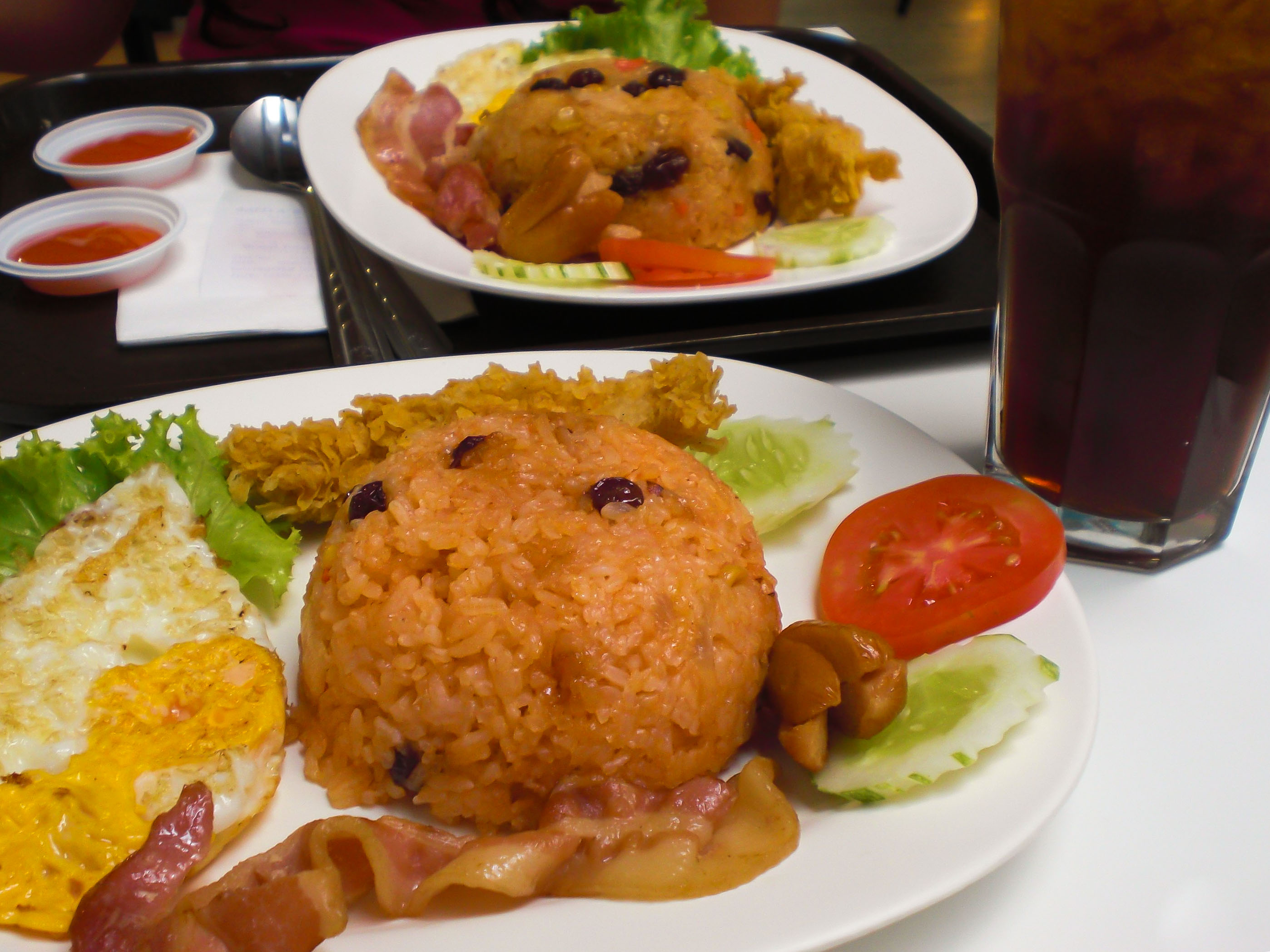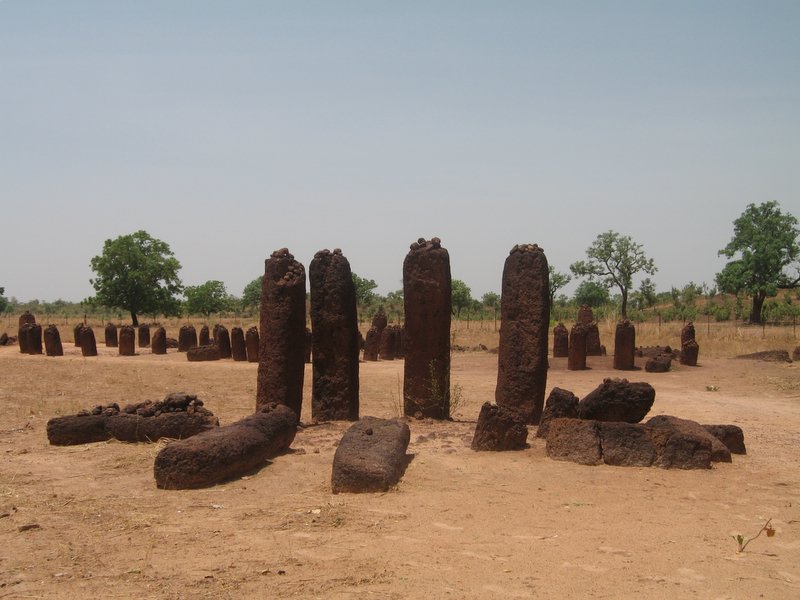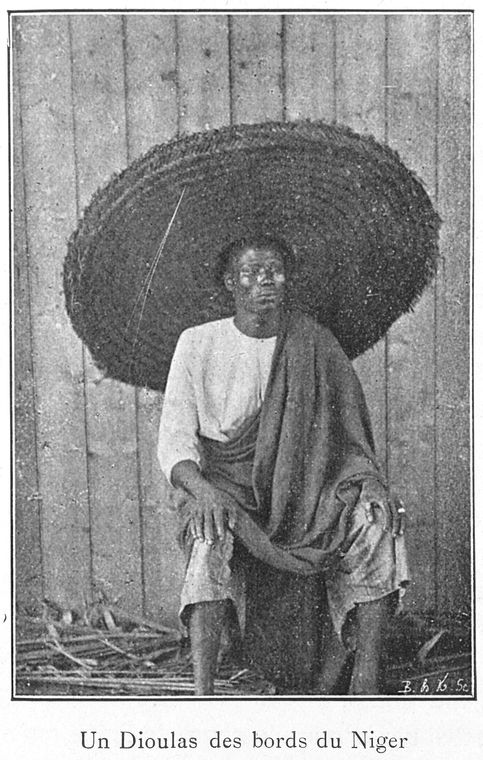|
Jollof
Jollof (), or jollof rice, is a rice dish from West Africa. The dish is typically made with long-grain rice, tomatoes, onions, spices, vegetables and meat in a single pot, although its ingredients and preparation methods vary across different regions. History and origin The origins of jollof rice can be traced to the Senegambian region that was ruled by the Wolof or Jolof Empire in the 14th century, spanning parts of today's Senegal, The Gambia and Mauritania, where rice was grown. The dish has its roots in a traditional dish called thieboudienne, containing rice, fish, shellfish and vegetables. Food and agriculture historian James C. McCann considers this claim plausible given the popularity of rice in the upper Niger valley, but considers it unlikely that the dish could have spread from Senegal to its current range since such a diffusion is not seen in "linguistic, historical or political patterns". Instead he proposes that the dish spread with the Mali empire, especi ... [...More Info...] [...Related Items...] OR: [Wikipedia] [Google] [Baidu] |
West African Cuisine
West African cuisine encompasses a diverse range of foods that are split between its 16 countries. In West Africa, many families grow and raise their own food, and within each there is a division of labor. Indigenous foods consist of a number of plant species and animals, and are important to those whose lifestyle depends on farming and hunting. The history of West Africa also plays a large role in their cuisine and recipes, as interactions with different cultures (particularly the Arab world and later Europeans) over the centuries have introduced many ingredients that went on to become key components of the various national cuisines today. History During the early modern period, European explorers and slave traders influenced regional cuisines in West Africa, but only to a limited extent. However, it was European merchant and slave ships which brought chili peppers, corn and tomatoes from the New World, and both have become ubiquitous components of West African cuisines, alon ... [...More Info...] [...Related Items...] OR: [Wikipedia] [Google] [Baidu] |
Ceebu Jën
''Tiep'' or ''thieb'' is a traditional dish from Senegal that is also consumed in Guinea-Bissau, Guinea, Mali, Mauritania, and The Gambia. It is the national dish in Senegal. The version of tiep called ''thieboudienne'' or ''chebu jen'' ( wo, ceebu jën; french: thiéboudiène) is prepared with fish, rice and tomato sauce cooked in one pot. There are also ''tiep yappa'' (with meat) and ''tiep ganaar'' (with chicken). Additional ingredients often include onions, carrots, cabbage, cassava, hot pepper, lime and peanut oil, and stock cubes. Historically, tiep is commonly attributed to the city of Saint-Louis, in the nineteenth century. The name of the dish comes from Wolof words meaning 'rice' () and 'fish' (). In Pulaar it is known as ('rice and fish'). It is served on large trays with the rice on the bottom and the fish, usually white grouper (''Epinephelus aeneus''), and the vegetables, many of them whole, placed in the center. Traditionally it is eaten in a large communal di ... [...More Info...] [...Related Items...] OR: [Wikipedia] [Google] [Baidu] |
Thieboudienne
''Tiep'' or ''thieb'' is a traditional dish from Senegal that is also consumed in Guinea-Bissau, Guinea, Mali, Mauritania, and The Gambia. It is the national dish in Senegal. The version of tiep called ''thieboudienne'' or ''chebu jen'' ( wo, ceebu jën; french: thiéboudiène) is prepared with fish, rice and tomato sauce cooked in one pot. There are also ''tiep yappa'' (with meat) and ''tiep ganaar'' (with chicken). Additional ingredients often include onions, carrots, cabbage, cassava, hot pepper, lime and peanut oil, and stock cubes. Historically, tiep is commonly attributed to the city of Saint-Louis, in the nineteenth century. The name of the dish comes from Wolof words meaning 'rice' () and 'fish' (). In Pulaar it is known as ('rice and fish'). It is served on large trays with the rice on the bottom and the fish, usually white grouper (''Epinephelus aeneus''), and the vegetables, many of them whole, placed in the center. Traditionally it is eaten in a large communal di ... [...More Info...] [...Related Items...] OR: [Wikipedia] [Google] [Baidu] |
Rice Dish
This is a list of rice dishes from all over the world, arranged alphabetically. Rice is the seed of the monocot plants ''Oryza sativa'' (Asian rice) or ''Oryza glaberrima'' (African rice). As a cereal grain, it is the most widely consumed staple food for a large part of the world's human population, especially in Asia and the West Indies. It is the grain with the second-highest worldwide production, after maize (corn), according to data for 2010. Rice dishes Unsorted * Aiwowo * Bagoong fried rice * Buttered rice * Kanika * Mutabbaq samak * Sayadieh See also * Arabic rice – a pilaf preparation using rice and vermicelli noodles * List of fried rice dishes * List of rice beverages * List of rice varieties * List of tortilla-based dishes * Pakistani rice dishes References {{Lists of prepared foods * Rice dishes Rice dishes Rice dishes Rice dishes This is a list of rice dishes from all over the world, arranged alphabetically. Rice is the seed of the monocot plants ''O ... [...More Info...] [...Related Items...] OR: [Wikipedia] [Google] [Baidu] |
Senegambia
The Senegambia (other names: Senegambia region or Senegambian zone,Barry, Boubacar, ''Senegambia and the Atlantic Slave Trade'', (Editors: David Anderson, Carolyn Brown; trans. Ayi Kwei Armah; contributors: David Anderson, American Council of Learned Societies, Carolyn Brown, University of Michigan. Digital Library Production Service, Christopher Clapham, Michael Gomez, Patrick Manning, David Robinson, Leonardo A. Villalon), Cambridge University Press (1998) p. 5,(Retrieved 15 March 2019) Senegaámbi in Wolof language, Wolof) is, in the narrow sense, a historical name for a geographical region in West Africa, which lies between the Senegal River in the north and the Gambia River in the south. However, there are also text sources which state that Senegambia is understood in a broader sense and equated with the term the Western region. This refers to the coastal areas between Senegal and Sierra Leone, where the inland border in the east was not further defined. Geographically, t ... [...More Info...] [...Related Items...] OR: [Wikipedia] [Google] [Baidu] |
Jolof Empire
{{dab ...
Jolof (french: Djolof or ') may refer to either of * Jolof Empire, a West African successor state to the Mali Empire in modern Senegal from the 14th to 16th centuries * Kingdom of Jolof, a rump survival of the earlier empire from the 16th to the 19th centuries See also * Jollof rice Jollof (), or jollof rice, is a rice dish from West Africa. The dish is typically made with long-grain rice, tomatoes, onions, spices, vegetables and meat in a single pot, although its ingredients and preparation methods vary across different re ... [...More Info...] [...Related Items...] OR: [Wikipedia] [Google] [Baidu] |
Dyula People
The Dyula (Dioula or Juula) are a Mande ethnic group inhabiting several West African countries, including Mali, Cote d'Ivoire, Ghana, and Burkina Faso. Characterized as a highly successful merchant caste, ''Dyula'' migrants began establishing trading communities across the region in the fourteenth century. Since business was often conducted under non-Muslim rulers, the ''Dyula'' developed a set of theological principles for Muslim minorities in non-Muslim societies. Their unique contribution of long-distance commerce, Islamic scholarship and religious tolerance were significant factors in the peaceful expansion of Islam in West Africa. Historical background The Mandé embraced Islam during the thirteenth century following introduction to the faith through contact with the North African traders. By the 14th century, the Malian empire (c.1230-1600) had reached its apogee, acquiring a considerable reputation for the Islamic rulings of its court and the pilgrimages of several emp ... [...More Info...] [...Related Items...] OR: [Wikipedia] [Google] [Baidu] |
Mali Empire
The Mali Empire ( Manding: ''Mandé''Ki-Zerbo, Joseph: ''UNESCO General History of Africa, Vol. IV, Abridged Edition: Africa from the Twelfth to the Sixteenth Century'', p. 57. University of California Press, 1997. or Manden; ar, مالي, Mālī) was an empire in West Africa from 1226 to 1670. The empire was founded by Sundiata Keita (c. 1214 – c. 1255) and became renowned for the wealth of its rulers, especially Mansa Musa (Musa Keita). The Manding languages were spoken in the empire. At its peak, Mali was the largest empire in West Africa, widely influencing the culture of the region through the spread of its language, laws and customs. Much of the recorded information about the Mali Empire comes from 14th-century Tunisian historian Ibn Khaldun, 14th-century Moroccan traveller Ibn Battuta and 16th-century Andalusian traveller Leo Africanus. The other major source of information is Mandinka oral tradition, as recorded by storytellers known as griots. The empire began as ... [...More Info...] [...Related Items...] OR: [Wikipedia] [Google] [Baidu] |
Islam
Islam (; ar, ۘالِإسلَام, , ) is an Abrahamic religions, Abrahamic Monotheism#Islam, monotheistic religion centred primarily around the Quran, a religious text considered by Muslims to be the direct word of God in Islam, God (or ''Allah'') as it was revealed to Muhammad, the Muhammad in Islam, main and final Islamic prophet.Peters, F. E. 2009. "Allāh." In , edited by J. L. Esposito. Oxford: Oxford University Press. . (See alsoquick reference) "[T]he Muslims' understanding of Allāh is based...on the Qurʿān's public witness. Allāh is Unique, the Creator, Sovereign, and Judge of mankind. It is Allāh who directs the universe through his direct action on nature and who has guided human history through his prophets, Abraham, with whom he made his covenant, Moses/Moosa, Jesus/Eesa, and Muḥammad, through all of whom he founded his chosen communities, the 'Peoples of the Book.'" It is the Major religious groups, world's second-largest religion behind Christianity, w ... [...More Info...] [...Related Items...] OR: [Wikipedia] [Google] [Baidu] |
Shellfish
Shellfish is a colloquial and fisheries term for exoskeleton-bearing aquatic invertebrates used as food, including various species of molluscs, crustaceans, and echinoderms. Although most kinds of shellfish are harvested from saltwater environments, some are found in freshwater. In addition, a few species of land crabs are eaten, for example ''Cardisoma guanhumi'' in the Caribbean. Shellfish are among the most common food allergens. Despite the name, ''shellfish'' are not fish. Most shellfish are low on the food chain and eat a diet composed primarily of phytoplankton and zooplankton. Many varieties of shellfish, and crustaceans in particular, are actually closely related to insects and arachnids; crustaceans make up one of the main subphyla of the phylum Arthropoda. Molluscs include cephalopods (squids, octopuses, cuttlefish) and bivalves (clams, oysters), as well as gastropods (aquatic species such as whelks and winkles; land species such as snails and slugs). M ... [...More Info...] [...Related Items...] OR: [Wikipedia] [Google] [Baidu] |
Emeritus Professor
''Emeritus'' (; female: ''emerita'') is an adjective used to designate a retired chair, professor, pastor, bishop, pope, director, president, prime minister, rabbi, emperor, or other person who has been "permitted to retain as an honorary title the rank of the last office held". In some cases, the term is conferred automatically upon all persons who retire at a given rank, but in others, it remains a mark of distinguished service awarded selectively on retirement. It is also used when a person of distinction in a profession retires or hands over the position, enabling their former rank to be retained in their title, e.g., "professor emeritus". The term ''emeritus'' does not necessarily signify that a person has relinquished all the duties of their former position, and they may continue to exercise some of them. In the description of deceased professors emeritus listed at U.S. universities, the title ''emeritus'' is replaced by indicating the years of their appointmentsThe Protoc ... [...More Info...] [...Related Items...] OR: [Wikipedia] [Google] [Baidu] |
Agronomy
Agronomy is the science and technology of producing and using plants by agriculture for food, fuel, fiber, chemicals, recreation, or land conservation. Agronomy has come to include research of plant genetics, plant physiology, meteorology, and soil science. It is the application of a combination of sciences such as biology, chemistry, economics, ecology, earth science, and genetics. Professionals of agronomy are termed agronomists. Plant breeding This topic of agronomy involves selective breeding of plants to produce the best crops for various conditions. Plant breeding has increased crop yields and has improved the nutritional value of numerous crops, including corn, soybeans, and wheat. It has also resulted in the development of new types of plants. For example, a hybrid grain named triticale was produced by crossbreeding rye and wheat. Triticale contains more usable protein than does either rye or wheat. Agronomy has also been instrumental for fruit and vegetable producti ... [...More Info...] [...Related Items...] OR: [Wikipedia] [Google] [Baidu] |





.jpg)
